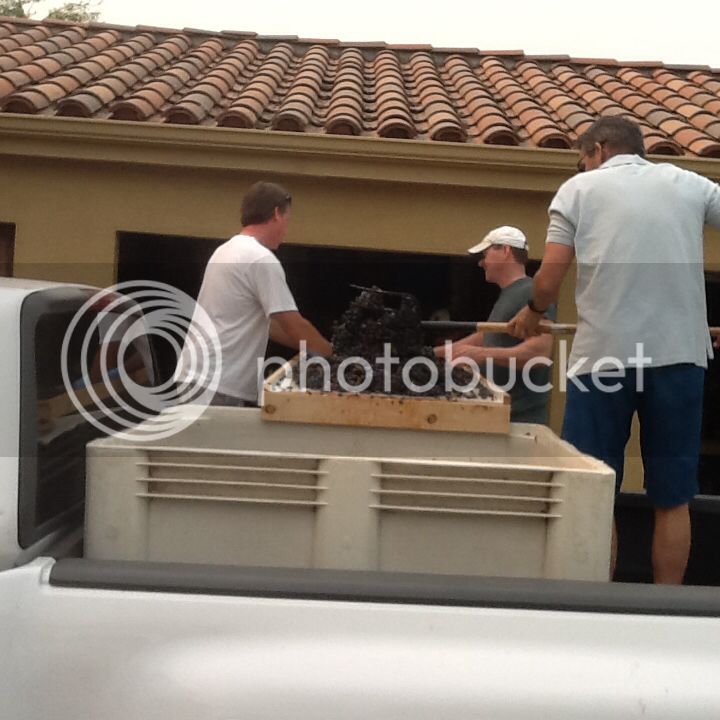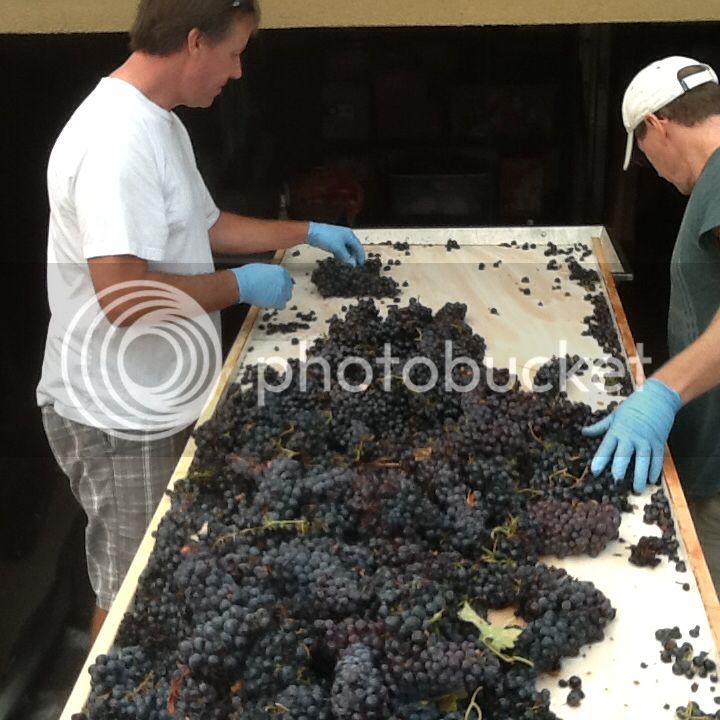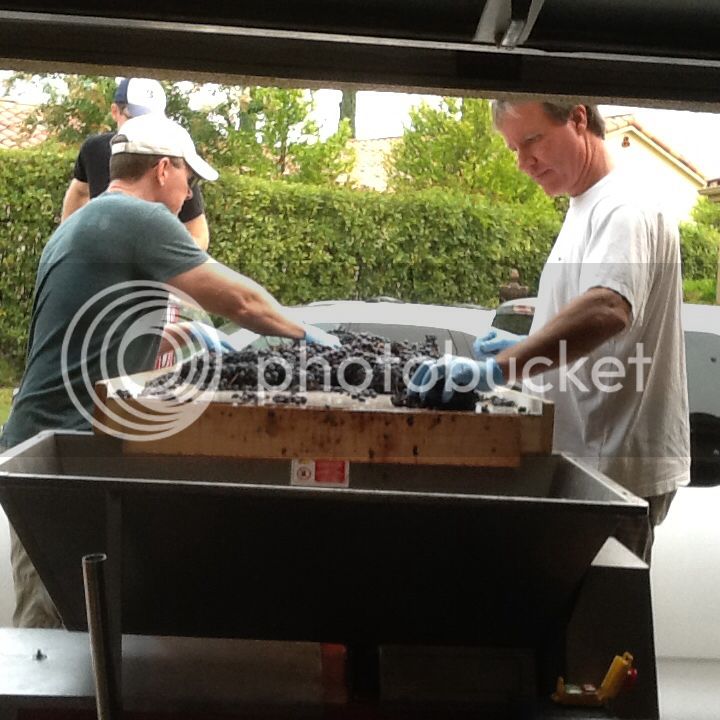- Joined
- Feb 9, 2010
- Messages
- 10,074
- Reaction score
- 5,974
In another thread, I was asked about second growth clusters. I then realized that we very rarely talk about sorting grapes, so I decided to start a thread about it.
For some, sorting is just the process of removing leaves and other "non-grape" matter. For me, it goes a whole lot further.
In the fall, I can have as many as 5 to 8 people sorting grapes and each sorter needs to be trained on what to look for (other than just leaves).
- Sections of cane - just snap them off the clusters. I prefer that these hard/woody "sticks" di not go through the destemer.
- overly dehydrated clusters - at times you find clusters that have shriveled up or rock hard grapes. I like to remove these since they will yield no juice and can only raise the tannins in the resulting wine (and not in a good way).
- Rotten clusters or clusters with more than just a few spots of mold. I can not help but feel that if you would not eat the grapes, then why would you want them in your wine?
- Second growth clusters - What I know of them is this... When a vine forms it's grape clusters, and they have developed to a certain point, vines can and do produce a second wave of clusters. These clusters have less time to ripen and thus tend to make a wine both bitter and "peppery". They are hard to describe. They look perfectly formed, only smaller with seeded berries that are not fully ripe.
Note: Perhaps some else would have more specific info on this topic?
- Clusters that are not fully ripe - Some clusters may have a few ripe berries while also having a number of berries that are still green.
- Harvest equipment - this is no joke. A couple of years back, one of my sorters found a harvest knife left in one of the lugs. If this fell into my destemer, there is no telling the amount of damage that would occur.
I simply tell the sorters that If you would not eat a particular cluster of grapes, then would you want to drink the wine made from it?? I also tell them that if they have to ask if a cluster is good or not, then they should already know the answer.
Each year, I can count on a number of complaints from the sorters that it takes too long and is labor intensive. Each year, after sorting is finished, I have them sip some wine and then ask if sorting was worth it.
How about the rest of you folks? how do you go about sorting and what passes your QC?




For some, sorting is just the process of removing leaves and other "non-grape" matter. For me, it goes a whole lot further.
In the fall, I can have as many as 5 to 8 people sorting grapes and each sorter needs to be trained on what to look for (other than just leaves).
- Sections of cane - just snap them off the clusters. I prefer that these hard/woody "sticks" di not go through the destemer.
- overly dehydrated clusters - at times you find clusters that have shriveled up or rock hard grapes. I like to remove these since they will yield no juice and can only raise the tannins in the resulting wine (and not in a good way).
- Rotten clusters or clusters with more than just a few spots of mold. I can not help but feel that if you would not eat the grapes, then why would you want them in your wine?
- Second growth clusters - What I know of them is this... When a vine forms it's grape clusters, and they have developed to a certain point, vines can and do produce a second wave of clusters. These clusters have less time to ripen and thus tend to make a wine both bitter and "peppery". They are hard to describe. They look perfectly formed, only smaller with seeded berries that are not fully ripe.
Note: Perhaps some else would have more specific info on this topic?
- Clusters that are not fully ripe - Some clusters may have a few ripe berries while also having a number of berries that are still green.
- Harvest equipment - this is no joke. A couple of years back, one of my sorters found a harvest knife left in one of the lugs. If this fell into my destemer, there is no telling the amount of damage that would occur.
I simply tell the sorters that If you would not eat a particular cluster of grapes, then would you want to drink the wine made from it?? I also tell them that if they have to ask if a cluster is good or not, then they should already know the answer.
Each year, I can count on a number of complaints from the sorters that it takes too long and is labor intensive. Each year, after sorting is finished, I have them sip some wine and then ask if sorting was worth it.
How about the rest of you folks? how do you go about sorting and what passes your QC?


































![[Upgraded] 9Pcs Tree Root Growing Box with Drain Holes, Half Transparent Plant Rooting Propagation Ball & Metal Core Twist Ties, for Fast Propagation Plants (Size M)](https://m.media-amazon.com/images/I/514MWQxtWOL._SL500_.jpg)

























